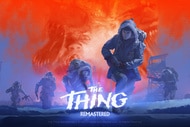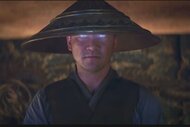Create a free profile to get unlimited access to exclusive videos, sweepstakes, and more!
Sega's 32X was one of video gaming's biggest disasters

In 1991, Sega of America was basking in the unexpected success of the Sega Genesis. Although the Nintendo Entertainment System's massive launch in 1984 has positioned Nintendo as the top dog of the video game industry, Sega was coming for the gaming crown. Thanks in part to a new marketing push for the company's old Mega Drive — along with the arrival of a little game called Sonic the Hedgehog — Sega managed to claim more than half of the 16-bit console market by 1992. But within five years the company would be in steep decline, in part thanks to a series of missteps including the infamous 32X, one of the most notorious failures in console history.
In the early '90s, obsessed with maintaining the lion's share of the video game market, Sega focused on hardware, hoping to lure players to their side with more bits. By that time the NES's 8-bit graphics were old news and gamers were looking for graphics that rivaled what they saw in the arcades.
In 1992, Sega made their first push to upgrade the Sega Genesis, hoping to keep players with better graphics and new games, with the Sega CD. The hardware add-on attached to the Genesis and allowed players to enjoy newer games like Virtua Fighter, Sonic CD, Virtua Racing, and the infamous Night Trap. It was a moderate success that capitalized on the growing popularity of CDs, and it reinforced the idea that gamers would actually purchase an add-on for their console.
In 1994, Sega decided to test out that theory as they began work on the 32X. Conceived as a way to keep Sega Genesis players on the system, the 32X basically doubled the computing power of the Genesis, allowing for better graphics. Sold separately for $160, the 32X was designed to be inserted into the standard Genesis console, piggybacking off some of the Genesis' capabilities and adding its own stable of new 32X-exclusive games.
By this time, the first Playstation was already in development, rumblings that Nintendo was working on a new console were getting louder, and even Sega itself had begun work on a new console (the Sega Saturn). Additionally, the Atari Jaguar (the first-ever 64-bit console) had just come out, and 3DO was still skirting the edges of the market.
In an interview with Nintendo Life, Scot Bayless — a senior producer at Sega of America from 1990 to 1994 — said the orders for the 32X initially came down from Sega of Japan CEO Hayao Nakayama. According to Bayless, there had already been some discussion about an up-gunned Mega Drive.
"[Sega of America's head of R&D Joe Miller] said he was confident the US team could come up with a design that would do the job, so Nakayama said 'get it done' and we were off to the races," he said. "Marty Franz grabbed one of those little hotel notepads and drew a couple of Hitachi SH2 processors, each with its own frame buffer. That's pretty much where 32X started."
While the 32X, which was developed under the code name Mars, was meant to enhance and extend the abilities of the Genesis — which by then was six years old — it shared several similarities with Sega's new CD-based console, the Saturn. Both pieces of hardware used twin Hitachi SH2 processors, which allowed for the rendering of the 3D environments seen in games like Virtua Fighter. Unfortunately, there was a shortage of processors due to the same 32-bit chips being used in both the 32X and Saturn.
Released in November 1994, a little less than a month after the release of the Sega Saturn in Japan and a little less than a year from the Saturn's American launch, the 32X was destined for failure. As a result of the timing, the lack of quality games, and an awkward rollout, the 32X died on the vine. When the system actually hit store shelves in America, it did so with only two games: Doom and Star Wars: Arcade.
The 32X launched in the same month as several of Nintendo's critical and commercial successes, including Donkey Kong Country and NBA Jam: Tournament Edition, and a month after Super Punch Out and Final Fantasy III. It launched a week before the Atari Jaguar and, as mentioned, a month after the Saturn had already been released in Japan. It was also selling Doom after Doom II had already been released for PCs.
Not like it needed it, but the 32X had other issues aside from a lack of games and bad timing. First, the add-on looked awful, like a giant black video game mushroom sprouting from a player's Genesis. It also required several more cords and adapters to make it work. Prior to launch, Sega promised as many as 60 games within the first year, with half expected to be delivered when the system debuted. In the end, fewer than 40 were ever made. Additionally, at a cost of $160 at launch (Sega had initially advertised a $150 price tag), the system was expensive enough to keep customers away.
In the end, compared to the Genesis' 43 million units sold and the Sega CD's 6 million units, Sega's 32x numbers were paltry. In the lead-up to the launch, demand among retailers was so high that Sega could not keep up with orders for the new add-on. Even though 1 million orders had been placed for Sega's new hardware, the company had only managed to ship 600,000 units by January 1995.
The failure of the 32X represented not only a misstep on Sega's part but also a failure to see the big picture, which cost the company dearly. At its core, the 32X was a good idea — a lower-cost entry point to better games. The only problem is that the games never materialized, and support quickly waned in anticipation of the Sega Saturn.
Perhaps even worse was the way that the 32X splintered Sega's loyal audience. What few customers who did buy into the 32X were less than pleased to see Sega touting its new console less than a year after the 32X's launch. The ramifications were long-lasting. By 2001 — after disappointing sales of the Saturn and the Dreamcast — Sega had official run out of goodwill with gamers and withdrew from the domestic hardware market.
In an interview with Nintendo Life in 2010, Bayless — the former senior producer at Sega of America — said that working for Sega from 1992 through 1994 was "like watching the Hindenburg in slow motion."
Much like that Zeppelin, the 32X had gone up in flames.




























